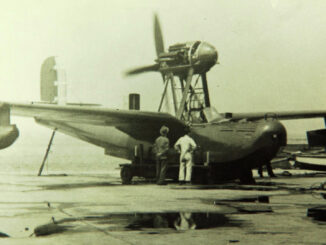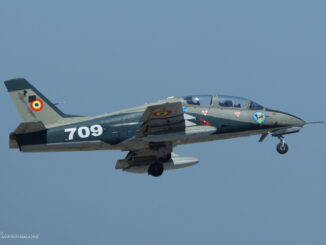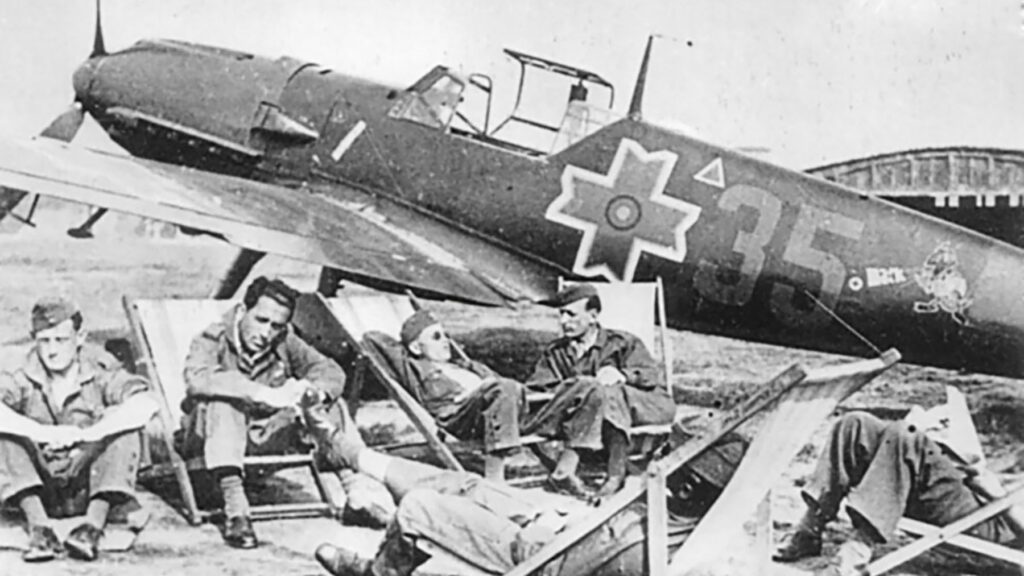 On 17th May 1912, Alexandru Șerbănescu (nicknamed Alecu), Romanian pilot and the fighter ace of the World War II, was born in Colonești, Romania.
On 17th May 1912, Alexandru Șerbănescu (nicknamed Alecu), Romanian pilot and the fighter ace of the World War II, was born in Colonești, Romania.
Alexandru Șerbănescu began his military career in the late 1920s, when he enrolled at ´Nicolae Filipescu´ Military High School (Liceul Militar ´Nicolae Filipescu´) in Mănăstirea Dealu. Then, he continued the educaton in Military School of Infantry Officers ´Prince Charles´ (Școala Militară de Ofițeri de Infanterie „Principele Carol”) in Sibiu. Șerbănescu graduated in 1933 and became a sub-lieutenant of the mountain troops in the 3rd Battalion of the Mountain Huntsmen (Batalionul 3 Vânători de Munte) in Brașov.
Șerbănescu continued his service in the Mountain Huntsmen, the elite mountain troops of the Romanian armed forces, until the end of 1938. In November of that year, he enlisted in the course for aerial observers. After graduating the School of Aerial Observers (Scoala de observatori aerieni), Șerbănescu decided to leave the Mountain Huntsmen and stay with the air force.
With the outbreak of the World War II, Șerbănescu began his pilot´s training. In October of 1940, he received the pilot´s license and shortly after was assigned a task of flight instructor.
On 22nd June 1941, Germany invaded the Soviet Union. Romania, as one of the German allies, officially entered the World War II. At the beginning of next year, Alexandru Șerbănescu was transferred to the 9th Fighter Group (Grupul 9 Vânătoare) and became a fighter pilot, flying with IAR 80 aircraft. Later that year, he was assigned to the 7th Fighter Group (Grupul 7 Vânătoare) and switched for Messerschmitt Bf 109.
In the coming months, Șerbănescu served on the Eastern Front and participated in the Stalingrad campaign. There, on 17th September 1942, the Romanian pilot scored his first aerial victory over the Soviet Yak fighter.
Șerbănescu continued flying on the Eastern Front until the beginning of 1944. His units operated over the southern Ukraine, with air bases located in Dniepropetrovsk (now Dnipro), Kramatorskaya, Mariupol, Lepetykha and Nikolayev. In February of 1944, Alexandru Șerbănescu was appointed the commander of the 9th fighter Group. Next month, he scored his already thirty-sixth aerial victory.
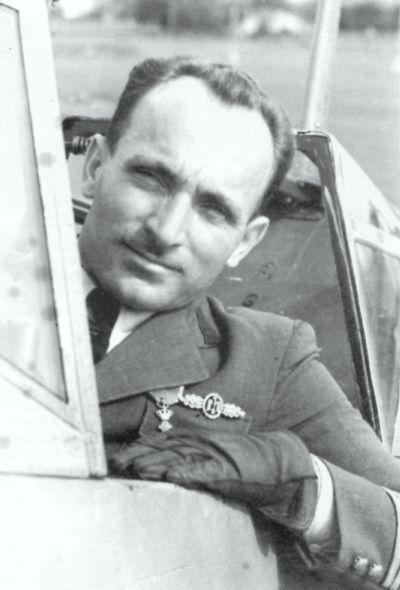
While Șerbănescu was engaged on the Eastern Front, the Allied forces began with air raids over Ploiești, the Romanian centre of oil industry, providing approximately thirty percent of the Axis oil production. The bombardment campaign began in June of 1942 and grew over the course of war, until it led to Operation Tidal Wave executed on 1st August 1943. On that day, a formation of 177 B-24 Liberators targeted Romania.
In 1944, the air raids were performed within Operation Frantic – a shuttle bombing operation, when the USAAF aircraft from the UK and Italy flew to their targets in Europe and next to the Soviet Union, where they landed. Then, after restoring their combat readiness, performed another air raid on the way back.
Therefore, Alexandru Șerbănescu and his unit took part in defending Romania against the allied raids. On 11th June 1944, the Romanian ace shot down his first American aircraft, a B-17 Flying Fortress. On 4th August of the same year, he shot down a Mustang, which became his forty-seventh, and last, aerial victory.
On 18th August 1944, Alexandru Șerbănescu was engaged in a dogfight with formation of the Mustang fighters and lost it being shot down. His aircraft was hit and crashed in the area of Buzău Valley, killing the pilot.
Alexandru Șerbănescu was the second-best Romanian fighter ace of the World War II (the first was Constantin Cantacuzino with 69 victories). According to the official record, he performed 590 combat missions and was engaged in 235 aerial battles.
Alexandru Șerbănescu´s legacy endures until today. Between 1993 and 2002, the air base in Deveselu (Baza Militară 99 Deveselu) was named after him. After its decommissioning, the honour was taken over by the 95th Air Base of the Romanian Air Force in Bacău, which was named after Șerbănescu in December of 2006 (Baza 95 Aeriană ´Erou Căpitan Aviator Alexandru Șerbănescu´).
There is also a street named after Alexandru Șerbănescu in Bucharest and a foundation that bears Șerbănescu´s name. In 2020, a small museum Centrul Muzeal ´Aviator Alexandru Şerbănescu´ was opened in Colonești, the commune Șerbănescu was born.
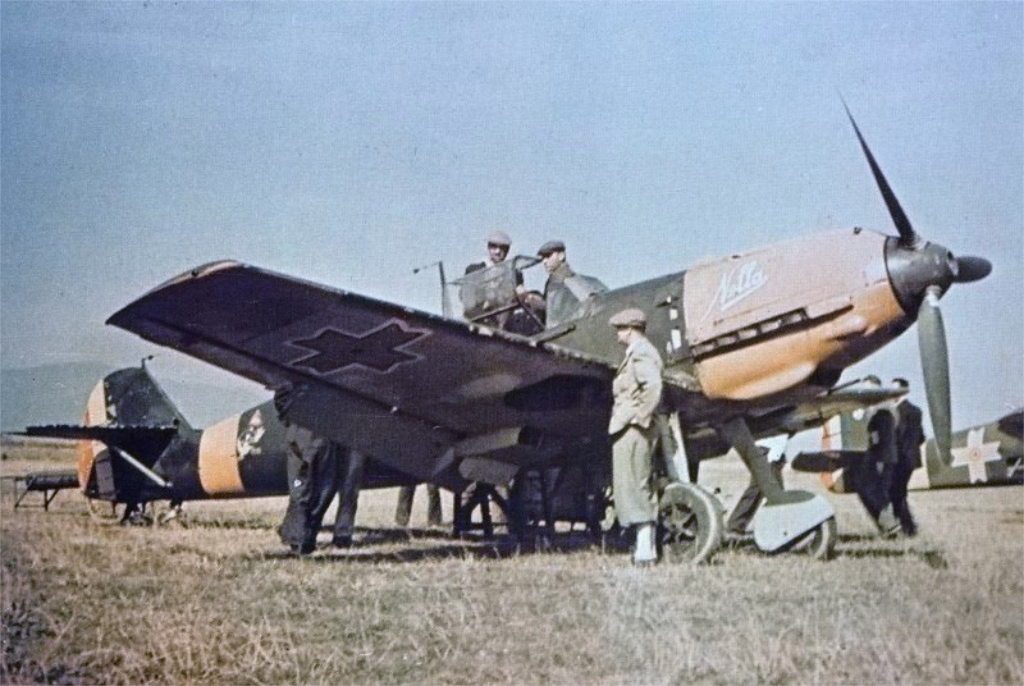
Cover photo: Group of the Romanian pilots and Bf 109E ´yellow 35´, 1942. The aircraft is believed to be flown by Șerbănescu during the Stalingrad campaign (source: Wikipedia, Public Domain).
Sources: Romanian Aces of World War 2 by Bernád and Weal, Osprey 2003 / Un nume de legenda Capitan av. erou Alexandru Serbanescu by Tudor, Modelism 1998

